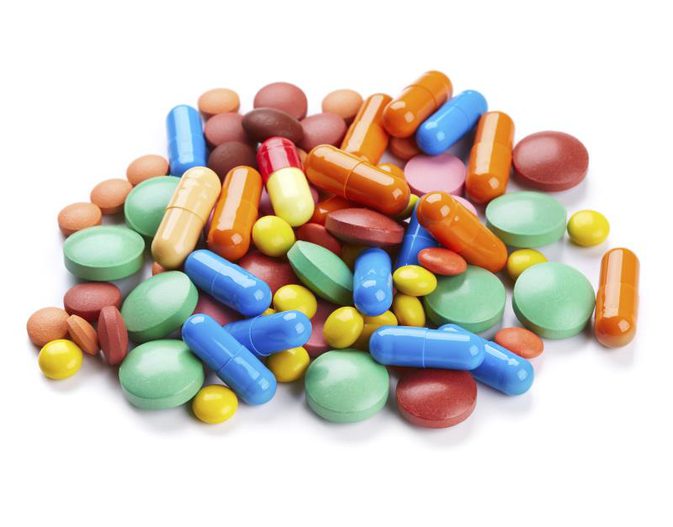We are currently the most medicated people to have walked the earth. There’s a pill for every ill. In terms of popularity, painkillers are at the heavy end of the list with hundreds of different pain meds available for all sorts of achy ailments. It’s true that pain is an industry of its own.
So when you’re out for a run, or you’re playing social hockey, and you roll your ankle causing a nasty swollen sprain, which painkiller is best?
So when you’re out for a run, or you’re playing social hockey, and you roll your ankle causing a nasty swollen sprain, which painkiller is best?
Funnily enough, your best bet is to avoid them altogether!
Non-steroidal anti-inflammatory drugs (NSAIDs) are a group of drugs that provide pain-killing, fever-reducing, and anti-inflammatory effects. Common New Zealand examples include Nurofen, Voltaren, Ibuprofen, and Aspirin. These drugs act to block in inflammation pathway, and in doing so reduce pain. They are used in the treatment of acute and chronic conditions where pain and inflammation is present.
As you might have already read in our previous article about why you shouldn’t ice an injury, the whole idea of reducing inflammation in an acute injury is flawed. Inflammation is the first phase of healing. The inflammatory process is essential for anyone wanting to heal optimally. To blunt this in-built healing mechanism is not in your best interests.
A study of Australian Army Recruits has shown us that although NSAIDs are effective in reducing pain and allowing an individual to return to activity sooner, the same individual fourteen days later will have more inflammation, instability and decreased range of motion compared with those who had avoided the drugs. Pain is the body’s way of telling you to lighten your load and rest an injured limb. When we mask the pain with medication or icing we tend to return to play earlier than is appropriate because although the healing has not happened and full function has not been restored, it “feels better” so we get back out there. Health professionals who assess people with pain are taught to be weary of patients who present to their practice having recently taken pain medication because it can significantly alter the presentation of an injury and hence the diagnosis. Keep in mind, these are just the direct effects of NSAIDs on injured tissue. Many other non-injury related side effects of pain medications are well documented (you can read them on the side of the packaging!).
If you’ve got an old or new injury, or just a niggle, instead of taking another painkiller, I suggest you try the following:
Non-steroidal anti-inflammatory drugs (NSAIDs) are a group of drugs that provide pain-killing, fever-reducing, and anti-inflammatory effects. Common New Zealand examples include Nurofen, Voltaren, Ibuprofen, and Aspirin. These drugs act to block in inflammation pathway, and in doing so reduce pain. They are used in the treatment of acute and chronic conditions where pain and inflammation is present.
As you might have already read in our previous article about why you shouldn’t ice an injury, the whole idea of reducing inflammation in an acute injury is flawed. Inflammation is the first phase of healing. The inflammatory process is essential for anyone wanting to heal optimally. To blunt this in-built healing mechanism is not in your best interests.
A study of Australian Army Recruits has shown us that although NSAIDs are effective in reducing pain and allowing an individual to return to activity sooner, the same individual fourteen days later will have more inflammation, instability and decreased range of motion compared with those who had avoided the drugs. Pain is the body’s way of telling you to lighten your load and rest an injured limb. When we mask the pain with medication or icing we tend to return to play earlier than is appropriate because although the healing has not happened and full function has not been restored, it “feels better” so we get back out there. Health professionals who assess people with pain are taught to be weary of patients who present to their practice having recently taken pain medication because it can significantly alter the presentation of an injury and hence the diagnosis. Keep in mind, these are just the direct effects of NSAIDs on injured tissue. Many other non-injury related side effects of pain medications are well documented (you can read them on the side of the packaging!).
If you’ve got an old or new injury, or just a niggle, instead of taking another painkiller, I suggest you try the following:
- Stop exercising immediately. Remember that the pain is a signal to stop using something because it can’t function as it should be able to.
- In the acute stage of the injury (24-48 hours) immobilise the injured area to prevent any further damage.
- Slowly introduce light movement to the area either by using your hands to gently move it or the muscles around the injury. Don’t push for any more range of motion than is comfortable.
- If you simply can’t deal with the pain, and a health professional has already ruled out severe damage, you can opt for minimal periods of compression and/or icing. If you do opt for icing, only apply the cold for 10 minutes and then leave it off for 20 minutes. Repeat a few times if necessary. By breaking up the cold periods, the blood vessels are able to open up and allow cellular and nutrient flow into the injured area.
- Clean up your eating. Eating hearty, healthy real foods packed with micronutrients in the days following an injury will promote powerful healing. If you eat and drink rubbish like processed foods and alcohol, you’ll perpetuate pain and prolonged recovery.
- Functional rehabilitation and joint mobilisation and manipulation are all well supported by scientific evidence, so it’s in your best interests to seek appropriate advice is the injury is of significant severity.




